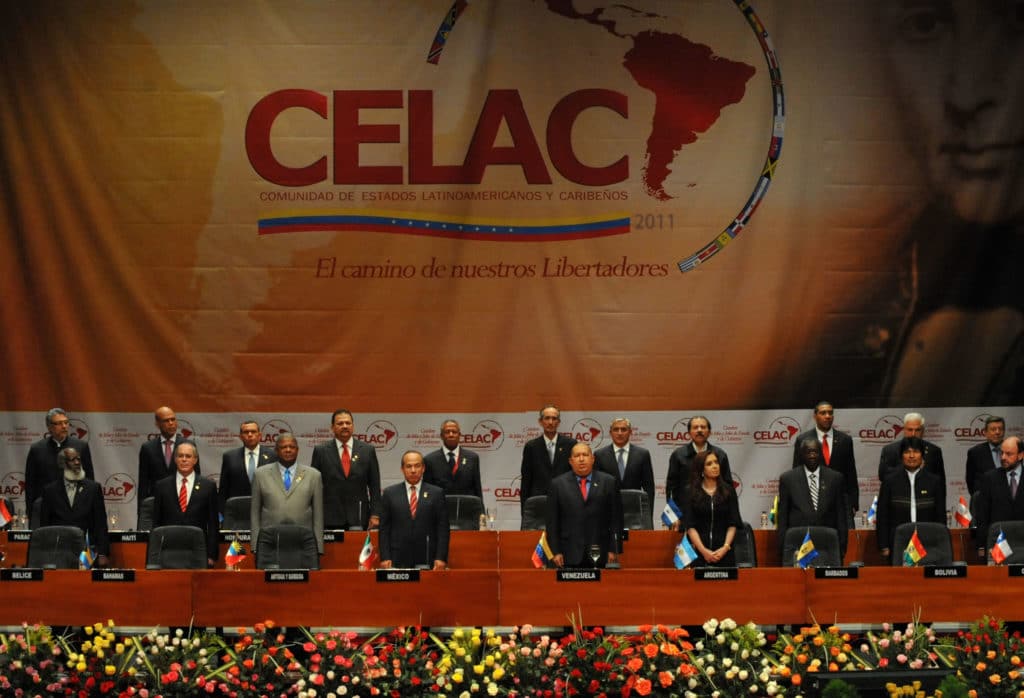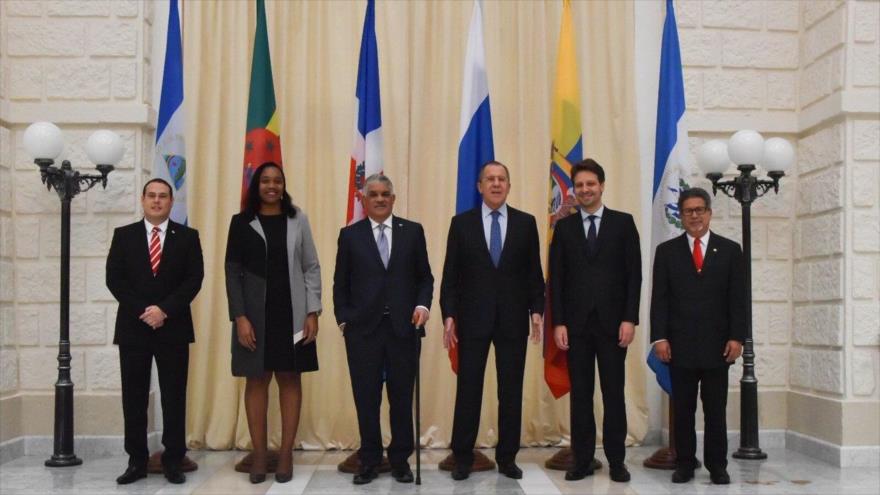December 3 was the day of the founding of the Community of Latin American and Caribbean States (CELAC). Today the CELAC is one of the most authoritative and representative integration associations, which includes almost all countries of the Latin American region. How are the relations of this structure with Russia developing? What are the prospects for the CELAC in the near future?
The Community of Latin American and Caribbean States (Spanish – Comunidad de Estados Latinoamericanos y Caribeños, CELAC) began its existence in 2011 at the Summit of the countries in Caracas. Today the CELAC is the largest organization in Latin America. The Community consists of 33 countries, and its activities take place within a wide range of issues: economic, social, environmental, political and cultural. It is worth noting that all the participating countries are geographically, culturally and linguistically related, which certainly gave the structure certain advantages from the very beginning.
The idea of creating this integration association appeared back in 2010, but the official foundation of the CELAC dates back a year later. Following the Summit in Venezuela, a number of documents were adopted: the Caracas Declaration, the 2012 Action Plan and the Organization’s Procedural Charter. The aforementioned documents became the basis for the creation of the Community and determined its structure, basic principles and initial goals. According to a number of researchers, the main reason that prompted the creation of the CELAC is that countries felt a general tiredness of feeling like a “prefix” of the United States and allowing them to get the best from the Latin American region. In this regard, it is customary to identify the CELAC with the group opposing the OAS, primarily because the US influence in it is denied.
Over the past 9 years, the CELAC countries have been developing quite actively and rapidly. Thanks to this union, the Latin American region was able to declare itself in a new way, with such world leaders as Russia and China began to interact more actively. The participating countries managed to organize a single platform for discussing cooperation issues and conduct regular bilateral and multilateral negotiations.

Today, Russia’s interaction with the CELAC member states can hardly be underestimated. The Russian Federation is one of the main strategic partners of the region. First of all, cooperation includes a cultural component, for example, broadcasting of a Russian, news, round-the-clock TV channel in a number of countries. In a broad sense, Russia and the CELAC interact within the framework of common foreign policy issues on the world stage, including participation in the solution of global problems, the peaceful settlement of regional and international conflicts, the protection of human rights, and the preservation of sovereignty and independence. The member states of the Community have managed to establish a “dialogue with Russia”, which is a regular holding of meetings of heads of state at the highest level. “On the sidelines” of such meetings, not only the problems of the countries of the region are resolved: terrorism, drug and human trafficking, high crime rates, poverty, unemployment and others; but, in addition, the issues of strengthening integration and the development of further, productive cooperation are being discussed, for example, the establishment of a visa-free regime with the countries of the union, the signing of agreements on nuclear energy, the placement of Russian innovative complexes on the territory of the countries of the Community, the exchange of technologies, advanced training of the workforce, cultural and student exchanges.
Over the years of its existence, the association has established a similar platform for holding discussions on pressing issues on the international agenda with the EU countries. Cooperation between the EU and the CELAC is carried out in all directions to a greater or lesser extent. The political direction includes the fight against organized crime, drug trafficking, terrorism, smuggling and social unrest in the countries. Economic interaction is aimed at developing market relations, free trade in goods and their access to countries’ markets, increasing the share of exports and imports, and growth of investment. The social dimension extends to the fight against poverty and inequality, raising the level of education, health care and general employment of the population. Currently, a number of researchers believe that in the near future the CELAC will be able to become like the EU, only on its own continent, and indeed, there are a number of opportunities and conditions for this.

Nevertheless, it is worth turning to the main problems of the region that hinder the development and strengthening of a single integration structure. First of all, there is still a high degree of dependence of a number of member countries of the association on the United States. For example, on January 16 this year, the Brazilian government suspended participation in the activities of the Community, of course, such a decision was made by the far-right leader Jair Bolsonaro (Port. – Jair Messias Bolsonaro) against the background of the fact that the association includes countries such as Cuba and Venezuela, with which the current authorities are in tense relations. Secondly, it is the evaluating character of the countries of the Latin American region, its catching-up development and still strong backwardness from world leaders. In addition, it is necessary to note the dependence of the regional markets and economies of the CELAC countries on the markets and economies, if not the United States, then other foreign states that are their allies or partners (for example, China and Russia). We must not forget about the traditional problems of the region: the number of people living in poverty; low standard of living; social inequality; as well as the resulting challenges such as terrorism, high crime rates, drug trafficking, etc.
Summing up the activities of the CELAC over the past 9 years, it is worth emphasizing that at the moment, in general, the countries of Latin America and the Caribbean continue to play a secondary role in the international arena. However, according to a number of analysts, they have every chance for further development and coming to the same level with such structures as, for example, the European Union. In any case, further integration processes in the CELAC states in the coming years will only intensify and gain momentum.


